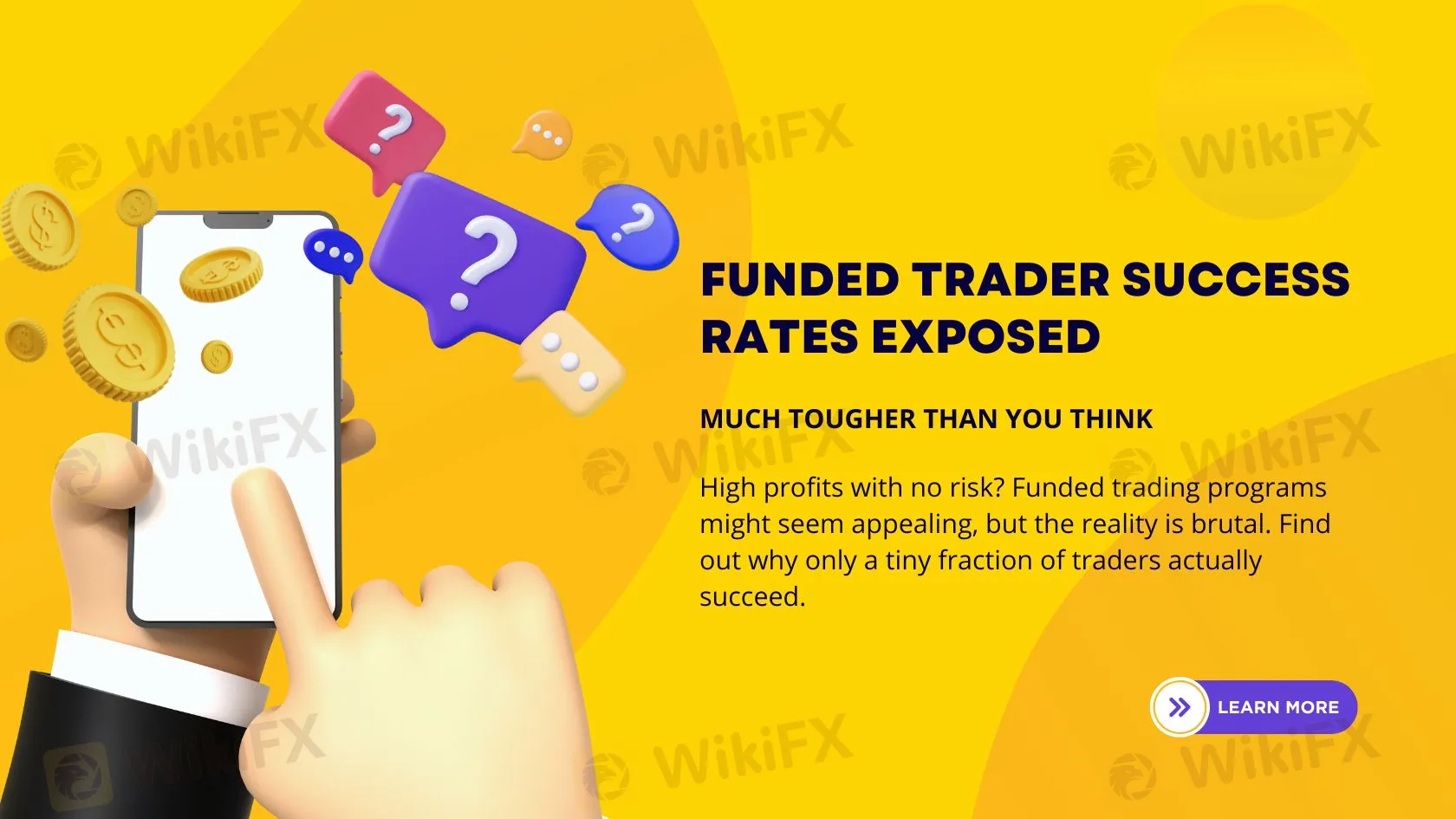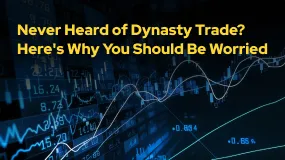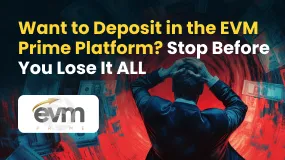简体中文
繁體中文
English
Pусский
日本語
ภาษาไทย
Tiếng Việt
Bahasa Indonesia
Español
हिन्दी
Filippiiniläinen
Français
Deutsch
Português
Türkçe
한국어
العربية
Funded Trader Success Rates Exposed: Much Tougher Than You Think
Abstract:High profits with no risk? Funded trading programs might seem appealing, but the reality is brutal. Find out why only a tiny fraction of traders actually succeed.

In recent years, funded trader programs have gained immense popularity among aspiring forex traders. These programs offer a seemingly attractive opportunity: trade with large capital without risking your own money. On the surface, it appears to be a win-win situation, as traders only need to prove their skills through a challenge to secure funding from a proprietary trading firm (prop firm).
However, the reality is far from glamorous. Behind the promises of capital and potential profits lie strict rules, high upfront costs, and daunting success rates that traders must navigate. Understanding how these programs actually work and the real chances of success is crucial for anyone considering joining.
The Real Rules of the Game
The basic concept of a funded trader program is that traders pay an entry fee to participate in a challenge or evaluation. These fees vary widely, from as low as $50 to over $1,000, depending on the funding level and trading capital offered. Generally, higher entry fees correspond to larger funding opportunities.
Traders are typically given a simulated trading account to demonstrate their ability to meet profit targets while adhering to stringent risk management criteria. These criteria often include:
• Profit Targets: Achieving a specific percentage gain, often ranging from 5% to 10% within a set period.
• Drawdown Limits: Maintaining losses below a specified percentage, typically around 5% to 10%.
• Time Constraints: Completing the challenge within a defined timeframe, often 30 to 60 days.
What makes the challenge even tougher is that some programs have multi-stage evaluations. Traders might pass the first round only to face an even stricter second round. Success at both stages is required to secure a funded account.
High Fees, Low Rewards
One of the most overlooked aspects of funded trader programs is the sheer cost involved. Entry fees can add up quickly, especially if a trader repeatedly fails challenges and has to reapply. Moreover, even successful traders often find that the payout ratios are not as lucrative as they initially seemed.
In many cases, firms offer profit splits ranging from 50% to 80%, but the reality is that only a small percentage of traders ever see those profits. Even after securing funding, maintaining the account is another challenge, as traders must consistently meet profit targets without exceeding drawdown limits.
Success Rates: The Grim Reality
Despite the attractive prospects, the truth is that very few traders actually succeed in funded programs. Industry data reveals that pass rates for initial evaluations range from 5% to 10%. However, even among those who do secure a funded account, maintaining profitability is a daunting task.
According to aggregated statistics, only about 20% of funded traders receive any payouts at all, and only 1% to 2% of total participants ultimately make money. This means that out of 100 traders who start the process, merely one or two will see actual returns.
Additionally, some traders report waiting months or even years to receive their payments, as firms often delay payouts due to “administrative” or “evaluation” issues.
Final Thoughts: Know What You‘re Getting Into
While the idea of trading with someone else’s capital sounds appealing, the reality is that the pathway to profitability is riddled with obstacles. With high entry fees, low success rates, and unpredictable payouts, aspiring traders must weigh the risks carefully before committing.
Before diving into any funded trader program, take the time to research the firm, read reviews from real users, and understand the payout structure. Only by approaching the challenge with realistic expectations and diligent preparation can you improve your chances of success.
Disclaimer:
The views in this article only represent the author's personal views, and do not constitute investment advice on this platform. This platform does not guarantee the accuracy, completeness and timeliness of the information in the article, and will not be liable for any loss caused by the use of or reliance on the information in the article.
Read more

Never Heard of Dynasty Trade? Here's Why You Should Be Worried
Have you heard this name before? No , it’s time you do because staying unaware could cost you. This platform is currently active in the forex trading and has been linked to several suspicious activities. Even if you’ve never dealt with it directly, there’s a chance it could reach out to you through ads, calls, messages, or social media. That’s why it’s important to know the red flags in advance.

Want to Deposit in the EVM Prime Platform? Stop Before You Lose It ALL
Contemplating forex investments in the EVM Prime platform? Think again! We empathize with those who have been bearing losses after losses with EVM Prime. We don't want you to be its next victim. Read this story that has investor complaints about EVM Prime.

WEEKLY SCAM BROKERS LIST IS OUT! Check it now
If you missed this week's fraud brokers list and are finding it difficult to track them one by one — don’t worry! We’ve brought together all the scam brokers you need to avoid, all in one place. Check this list now to stay alert and protect yourself from fraudulent brokers.

Catch the Latest Update on BotBro & Lavish Chaudhary
BotBro, an AI-based trading platform, became popular in India in 2024—but for negative reasons. Its founder, Lavish Chaudhary, who gained a huge following by promoting it heavily on social media. Since then, he has become well-known, but for many controversies. Let’s know the latest update about Botbro & Lavish Chaudhary.
WikiFX Broker
Latest News
Asia-Pacific stocks fall as investors weigh recent trade developments
Is Your Forex Strategy Failing? Here’s When to Change
FSMA Warns That Some Firms Operate as Pyramid Schemes
Apex Trader Funding is an Unregulated Firm | You Must Know the Risks
LVMH shares jump 2.5% after reporting better-than-feared earnings, Texas factory plans
Why Octa Is the Ideal Broker for MetaTrader 4 & 5 Users
Stop Level Forex: How Does it Help Traders Prevail When Losses Mount?
5 things to know before the Thursday open: Meme stock revival, Trump's Fed visit, Uber's gender feature
CNBC's Inside India newsletter: Leaving, but not letting go — India's wealthy move abroad, but stay invested
Moncler raises prices on tariffs, may postpone store openings if downturn worsens
Currency Calculator


